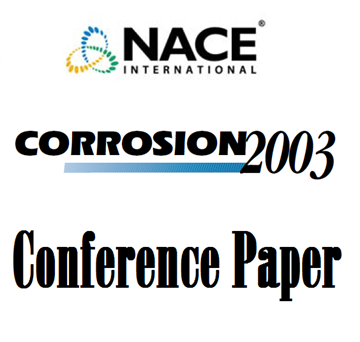Search
03172 Developing a Baseline Inline Inspection Program with Design and Operational Decisions on the use of a High Resolution Magnetic Flux Leakage Tool
Also Purchased
03178 EXPERIENCES IN ASSESSING INTERNAL CORROSION FOR MULTIPHASE FLOW PIPELINES
Product Number:
51300-03178-SG
ISBN:
03178 2003 CP
$20.00
03182 An LDC's Integrity Management Program
Product Number:
51300-03182-SG
ISBN:
03182 2003 CP
$20.00
03180 Advances in Corrosion Growth Analysis and Future Integrity Assessment of Pipelines
Product Number:
51300-03180-SG
ISBN:
03180 2003 CP
Publication Date:
2003
$20.00




